Still Not Dead Yet
 One morning a couple of days before my 74th birthday, I stepped on something partially buried in the dirt in my horse corral. I picked it up and turned it over in my hand. A porcelain round wafer the size of a lollipop mounted on a five-inch-long metal rod. Etched in black letters on its off-white surface: “NOT DEAD YET.”
One morning a couple of days before my 74th birthday, I stepped on something partially buried in the dirt in my horse corral. I picked it up and turned it over in my hand. A porcelain round wafer the size of a lollipop mounted on a five-inch-long metal rod. Etched in black letters on its off-white surface: “NOT DEAD YET.”
I don’t know the story behind its wry message, who lost it in the corral, or what its intended purpose may have been, but its serendipitous discovery right before a high-numbered birthday seemed a good omen.
I took it home, staked it in the center of a saucer-sized pie, and posted a photo of it on Facebook under the comment, “Birthdays at this age are fun, ain’t they?”
It seemed to hit a chord, especially with the “mature” crowd, garnering a bunch of likes and birthday wishes. Some weren’t so encouraging. One of my former Latham law partners wrote, “You have to wonder how many are bewildered you are not dead yet.” Another Latham guy said, “Keep doing these birthdays long enough and you will be dead.”
High-powered lawyers can be a pain in the butt. Why I left Latham to become a cabbage vendor.
Undaunted, I ate the pie and stashed the porcelain lollipop in my desk drawer.

On my 75th birthday, I used it to save money on birthday-cake candles. That year I also discovered an article by Dr. Ezekiel Emanuel, a renowned oncologist, bioethicist, and healthcare adviser to Presidents Obama and Biden, entitled Why I Hope to Die at 75, in which he argues the world would be a better place if he and the rest of us kicked the bucket at the three-quarter-century mark. According to him, at age 75 most of us head into a steep physical and cognitive decline. No longer capable of making valuable contributions to society, we live on only to inflict crushing emotional and financial burdens on our loved ones.
As a freshly minted member of the 75 club, I took offense and wrote a blog trying to rebut Dr. Zeke’s premise. See Staying Alive at 75.
My 76th birthday rolled on by this month. One year past Dr. Zeke’s sell-by date, I haven’t plunged into a steep physical decline. In fact, I’m in better shape now than I was ten years ago. Back then, I experienced a sudden weight gain. My rate of metabolism slowed with age to the point that a banana slug could crawl over a field of jagged boulders faster than I could burn calories. I could gain ten pounds inhaling the fumes coming off a hot pizza.

My doctor told me to go on a diet. Diets for my age group follow three basic principles: If it tastes good, you can’t eat it; if it tastes bad, you can only eat micro-portions of it; and if you drink anything containing alcohol, sugar, caffeine, salt, mercury, lactic acid, fructose, gluten, or artificial sweeteners, it’ll kill you. You can eat limited amounts of raw lettuce, cardboard-flavored sugarless oatmeal, organic non-fat plain yogurt, and nothing else. The good news is you can wash it down with as much water as you want, as long as it’s distilled or boiled.
I couldn’t do it. Sugar-glazed donuts, family-sized bags of Doritos, Big Macs with large fries, and sixpacks of Coors Light called out to me with siren songs I couldn’t resist. I went back to the doctor and confessed my eating binges.
“You’ll become Jabba The Hut,” she said.

“I don’t care. I can’t eat piles of green leaves and bowls of porridge for the rest of my life. There has to be another way.”
My only alternative, she said, was to burn off the calories. She prescribed a rigorous exercise program.
I set up an in-home workout area with an exercise ball, barbells, dumbbells, kettle bells, resistance straps, and a weight bench. Three times a week, I jumped around, sweated, and grunted a lot. A few pounds came off, but the scales wouldn’t budge lower.
I hired a physical trainer. She rationalized my weight-lifting routine and introduced me to balance exercises. Falls are the leading cause of injury and deaths for my age group. Every second of every day, someone over 65 falls; 36 million falls per year; 32,000 deaths. Practicing balance reduces that risk, but it also gives you a good workout. Try standing on one foot for sixty seconds. If you can do it without tipping over (most people over 65 cannot), your leg muscles will feel it big time.

My trainer incorporated a regimen of challenging balance exercises into my routine, but I still couldn’t hit my targeted weight. We added daily walks. Walking thirty minutes burns 150 calories and improves cardiovascular health. I walk with my dog, P.D. Along with its weight loss benefits, studies show dog-walking is relaxing and reduces stress. Apparently, P.D.’s approach to walks was not included in these studies. He has two gears, sub-low, where he stops to ponder a scent for three hours, and formula-race-car high, during which he runs like the wind, jerking my arm out of my shoulder socket and dragging me on my belly through briar patches. Nevertheless, when my walks with P.D. don’t escalate into a near-death experience, they burn fat cells.
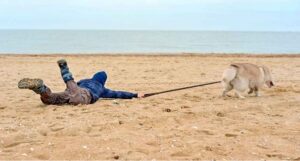
In the middle of all this, I took up horseback riding. I didn’t turn to riding for weight control, but it turned out to be a big help. Grooming the horses, tacking them up, and working around the barn shed weight, and riding works the core, abs, pelvis, legs, and arms. Riding at a walk burns 300 calories an hour. You can burn 700 calories at a gallop, but galloping can also kill you. I ride mostly at a walk.
With all that activity, instead of experiencing the physical decline Dr. Zeke predicted at age 75, my physical condition improved greatly.
On the cognitive front, I’m in reasonably good shape, too, although I’ll admit I’ve noticed a few minor issues. Vexing questions I never considered a few years ago now consume an ever-growing amount of my time. Puzzling imponderables, such as “Why did I walk into this room?” And “What day is it?”

I also tend to lose more stuff. Sometimes in plain sight. Like the time I searched high and low for my cell phone when it was in my left hand, or the occasions when I couldn’t find my reading glasses while they were perched on the end of my nose. But hey, these incidents are rare, occurring on average less than once an hour. (I don’t include in this count all those times I lost my car keys. After all, it’s not my fault some wise-ass keeps sneaking into the house and hiding them in the refrigerator.)
And the rumors that I’m losing my marbles are flat-out false. It’s true I talk to P.D. So what? I’ve always talked to dogs, and I know I’m not nuts because no dog has ever talked back to me.
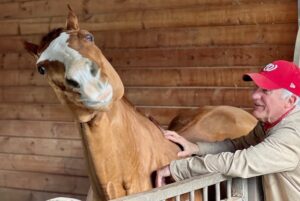
Okay, so the horses talk to me, but that doesn’t mean anything. It’s not a crazy Mr. Ed thing. The horses don’t vocalize. They converse telepathically, and they only express simple concepts, like “You brought the carrots, right?” And, ”If you didn’t bring the carrots, why are you here?” I’ve never had an extended complicated conversation with a horse. Except that time when Jackson asked me what was wrong and I told him I lost my car keys and he told me to look in the little refrigerator in the tack room and so, of course, I thanked him when I found them in there and he said you’re welcome, but there’s nothing strange about that because Jackson’s an exceptionally intelligent horse, and it only happened that one time.

So, no thanks, Dr. Zeke! I’m not buying what you’re selling. Here I am at 76, a full year beyond your drop-dead date, and I’m in great shape physically (although generally exhausted and sometimes seriously injured), mentally as sharp as a razor (even if I don’t always know where I am, why I’m there, or why my car keys are in the refrigerator), and planning to bank a ton of money I’ll save on birthday candles with my lollipop wafer over the next quarter century, when at 101 I will remain doggedly and defiantly Not Dead Yet.




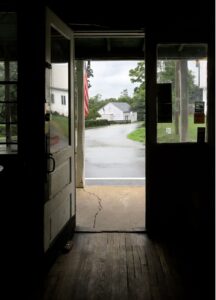
 She lived in a trailer in the woods with her mother, Lottie. Lottie was in her mid-fifties, short and stumpy with a weathered face, hearty laugh, and wide smile sporting a gap where her upper front teeth should have been.
She lived in a trailer in the woods with her mother, Lottie. Lottie was in her mid-fifties, short and stumpy with a weathered face, hearty laugh, and wide smile sporting a gap where her upper front teeth should have been.

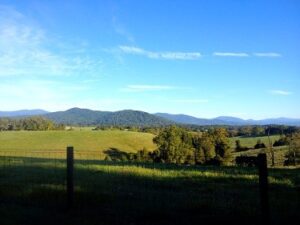
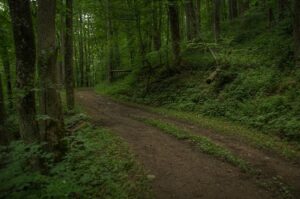

 At dusk in December, I ride Wilson along the base of a steep mountain. We’ve slowed to a walk, but he’s struggling, his breath coming in short bursts, vapor jetting from his nostrils.
At dusk in December, I ride Wilson along the base of a steep mountain. We’ve slowed to a walk, but he’s struggling, his breath coming in short bursts, vapor jetting from his nostrils. A cold shadow falls over us as the sun goes down behind the mountain. I stand and lead Wilson and Zoey through a grove of live oaks, their branches clawing at an indigo sky, giant bony fingers clinging to the dying light. We emerge from the trees into an open field where scattered desert flowers still bloom, little islands of gold, burgundy, and russet in a sea of gray brush.
A cold shadow falls over us as the sun goes down behind the mountain. I stand and lead Wilson and Zoey through a grove of live oaks, their branches clawing at an indigo sky, giant bony fingers clinging to the dying light. We emerge from the trees into an open field where scattered desert flowers still bloom, little islands of gold, burgundy, and russet in a sea of gray brush.  He’s a good horse. He tries hard to do everything we ask of him. Last year arthritis ate into his spine, and we took his saddle off for good. See
He’s a good horse. He tries hard to do everything we ask of him. Last year arthritis ate into his spine, and we took his saddle off for good. See 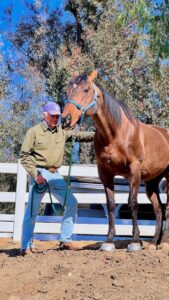 Then something went wrong with his front legs. He flinched in pain with every step. He stared vacantly into the distance with rheumy eyes. He didn’t respond to my voice or touch.
Then something went wrong with his front legs. He flinched in pain with every step. He stared vacantly into the distance with rheumy eyes. He didn’t respond to my voice or touch. 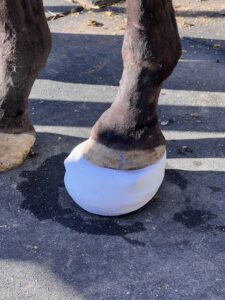 That afternoon I crouched beside the vet in front of a portable x–ray machine staring at images of the inside of Wilson’s front hooves. “They’re worn down,” the vet said. “Too short and too shallow. It’s like he’s walking on broken glass with bare feet.” Despite that, the vet was encouraged. “We caught this early. There’s a good chance we can treat it.”
That afternoon I crouched beside the vet in front of a portable x–ray machine staring at images of the inside of Wilson’s front hooves. “They’re worn down,” the vet said. “Too short and too shallow. It’s like he’s walking on broken glass with bare feet.” Despite that, the vet was encouraged. “We caught this early. There’s a good chance we can treat it.”  Meanwhile, Zoey did not fare as well. We feared she would pass away in September with a kidney ailment, but she recovered. See
Meanwhile, Zoey did not fare as well. We feared she would pass away in September with a kidney ailment, but she recovered. See  The emergency vet stabilized her with anti-seizure medication. An ultrasound revealed an enlarged heart with an imminent risk of a fatal heart attack. The next day our regular vet put her on heart medication.
The emergency vet stabilized her with anti-seizure medication. An ultrasound revealed an enlarged heart with an imminent risk of a fatal heart attack. The next day our regular vet put her on heart medication.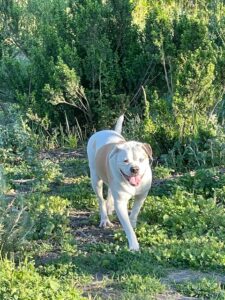 Six weeks later, she had two mild, short seizures two days apart. Both times she recovered quickly and acted as though nothing had happened. We increased her anti-seizure medication.
Six weeks later, she had two mild, short seizures two days apart. Both times she recovered quickly and acted as though nothing had happened. We increased her anti-seizure medication.  That afternoon at four o’clock I found her in my home office. She’d rolled over on her side and passed away peacefully.
That afternoon at four o’clock I found her in my home office. She’d rolled over on her side and passed away peacefully.